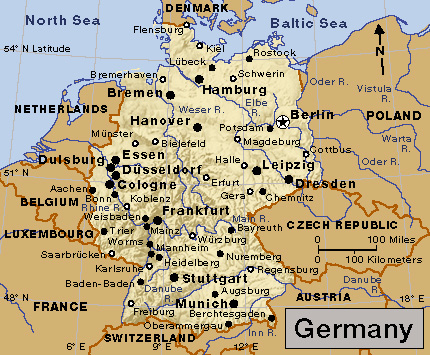Trier, << treer >> (pop. 105,671), is the oldest city in Germany. It lies on the Moselle River in the state of Rhineland-Palatinate, near Germany’s border with Luxembourg.

Trier is the center and market area of the Moselle wine district. The city makes leather goods, steel products, and textiles. Trier is also an important railroad junction. The University of Trier is chief among several institutes of higher education in the city.
Trier was founded by the Romans, probably around 15 B.C. It was named for the Treveri, a Celtic people of ancient Gaul. A number of Roman monuments, including an amphitheater, baths, and the celebrated Porta Nigra (fortified north gate), stand in the city. A large building known as the Basilica also dates from Roman times.
The city has been an important center of Roman Catholic tradition since the Middle Ages. It has a number of beautiful examples of church architecture, including the gothic Church of Our Lady and the baroque St. Paulin church.
Trier came under French control in 1794. It was awarded to Prussia by the Congress of Vienna in 1814-1815. In World War I (1914-1918) and World War II (1939-1945), bombs damaged much of the city. Trier’s historic buildings have since been restored.
